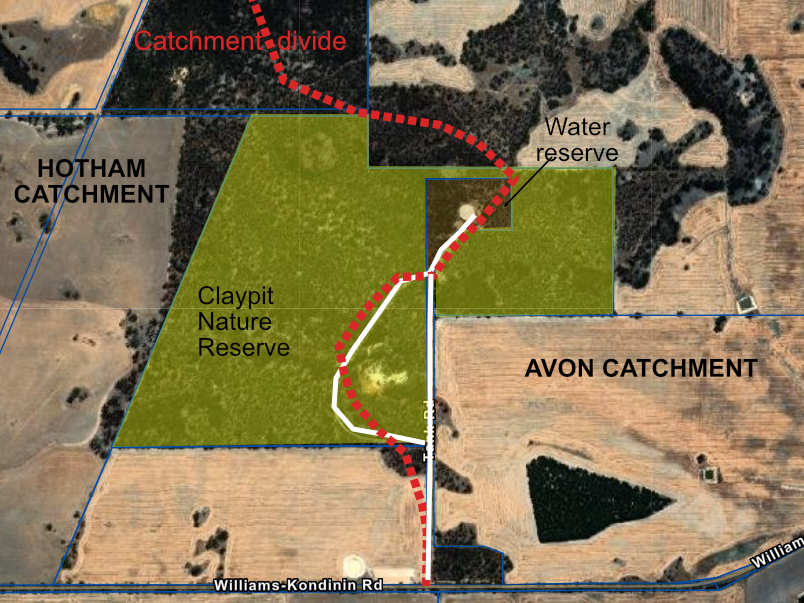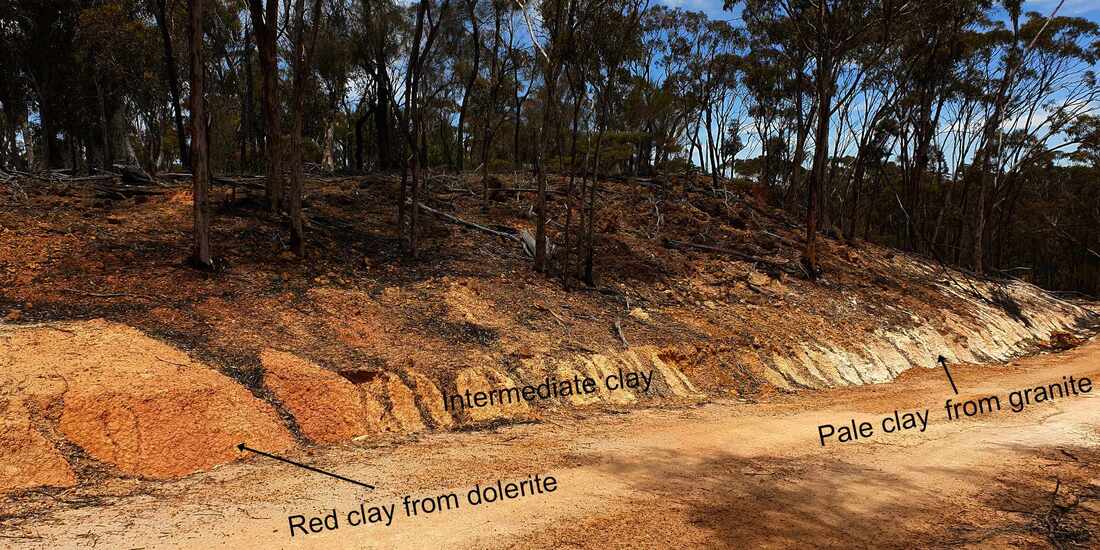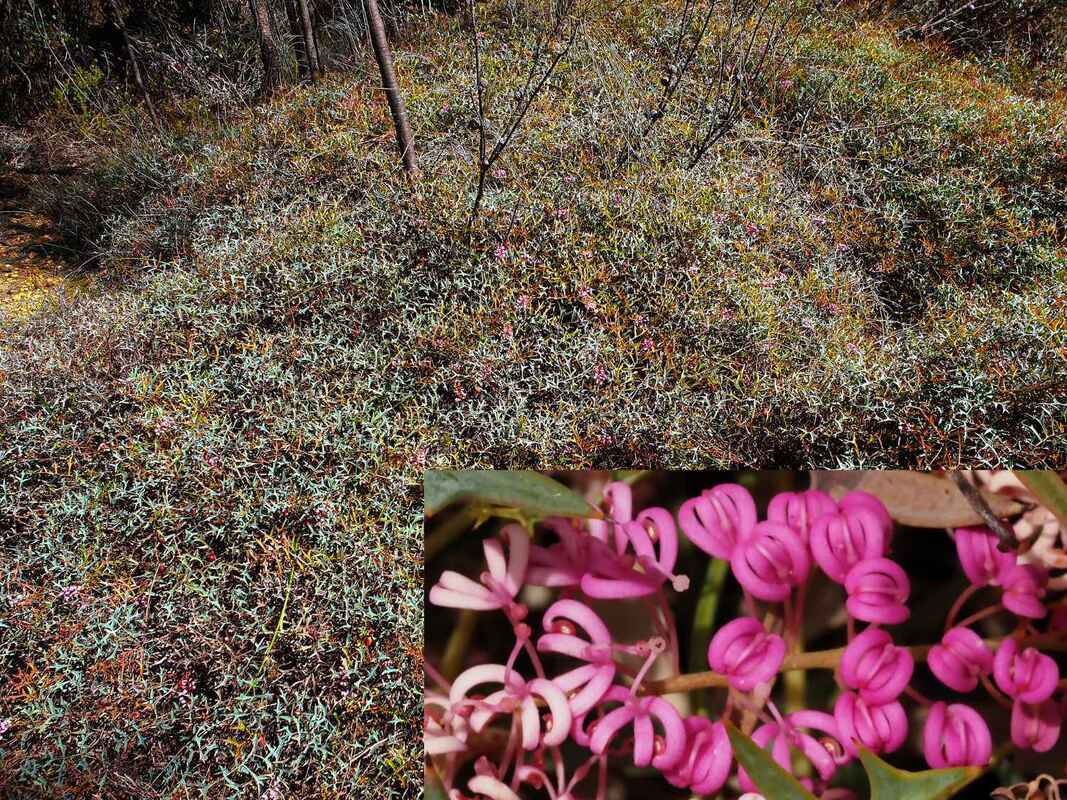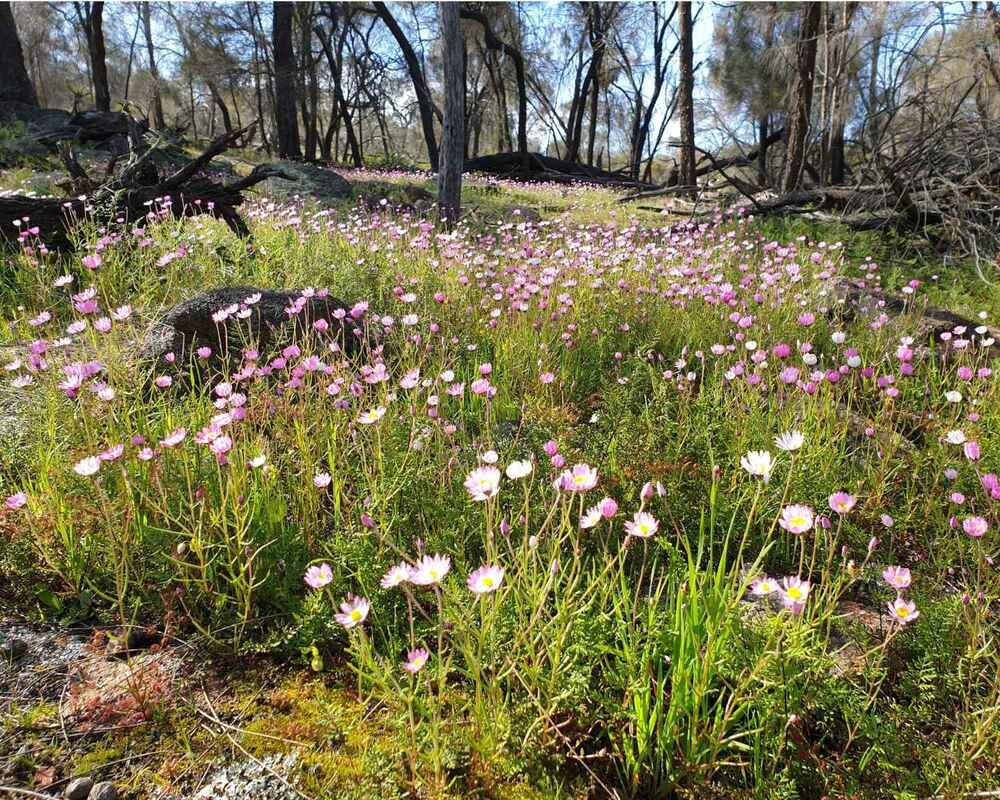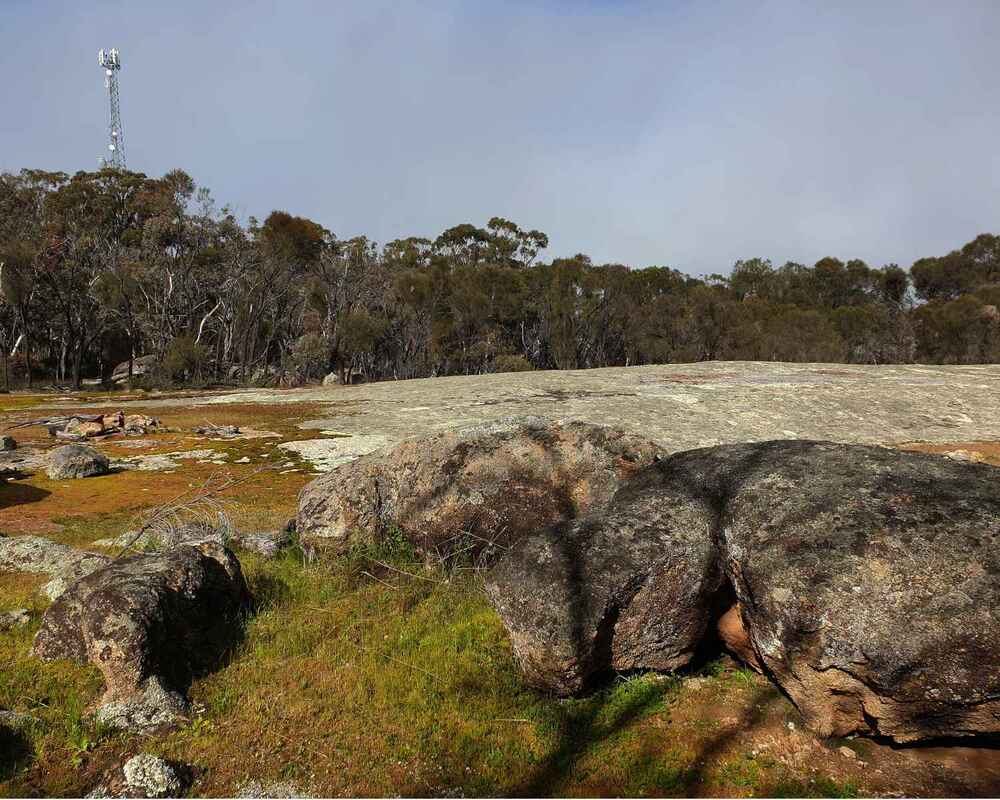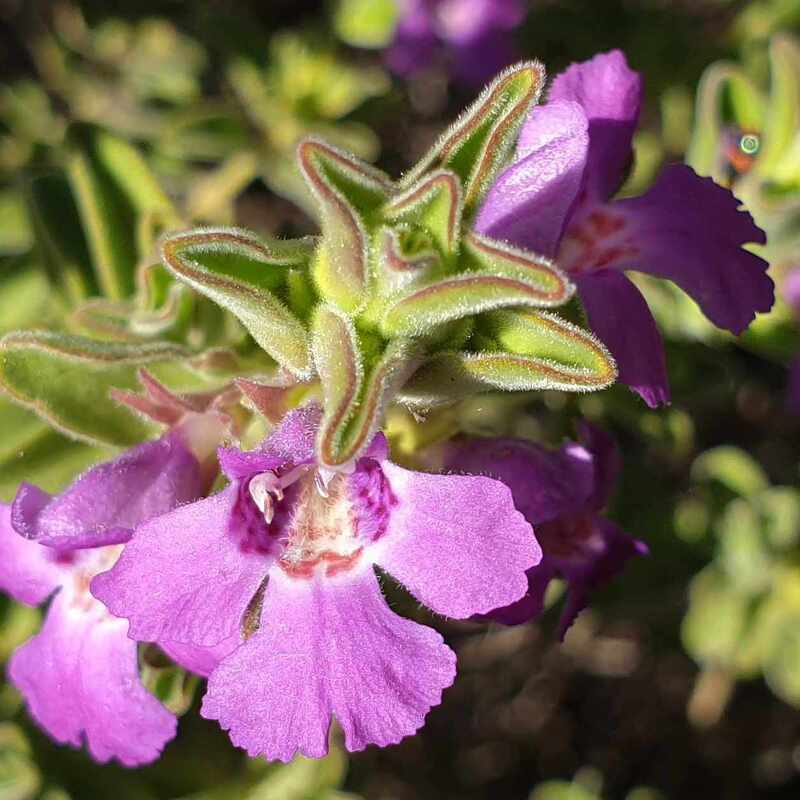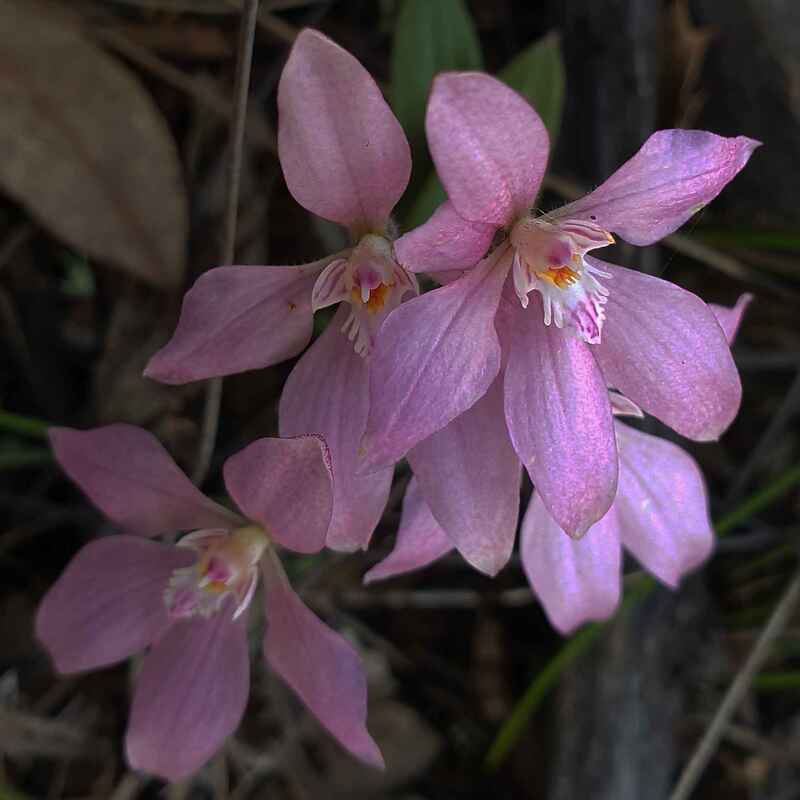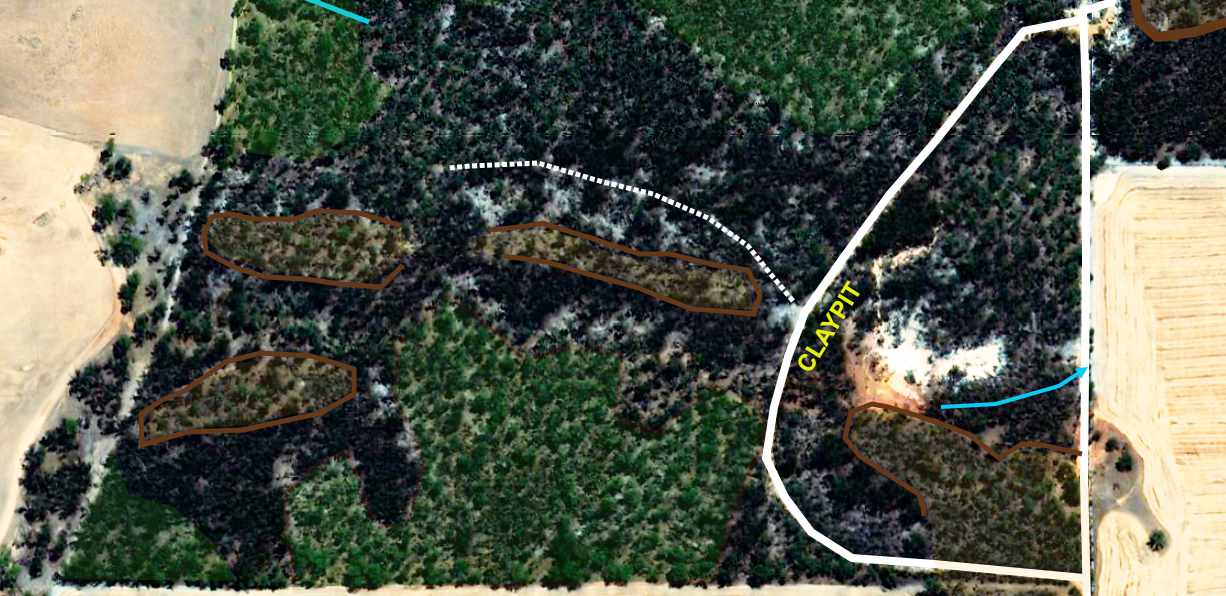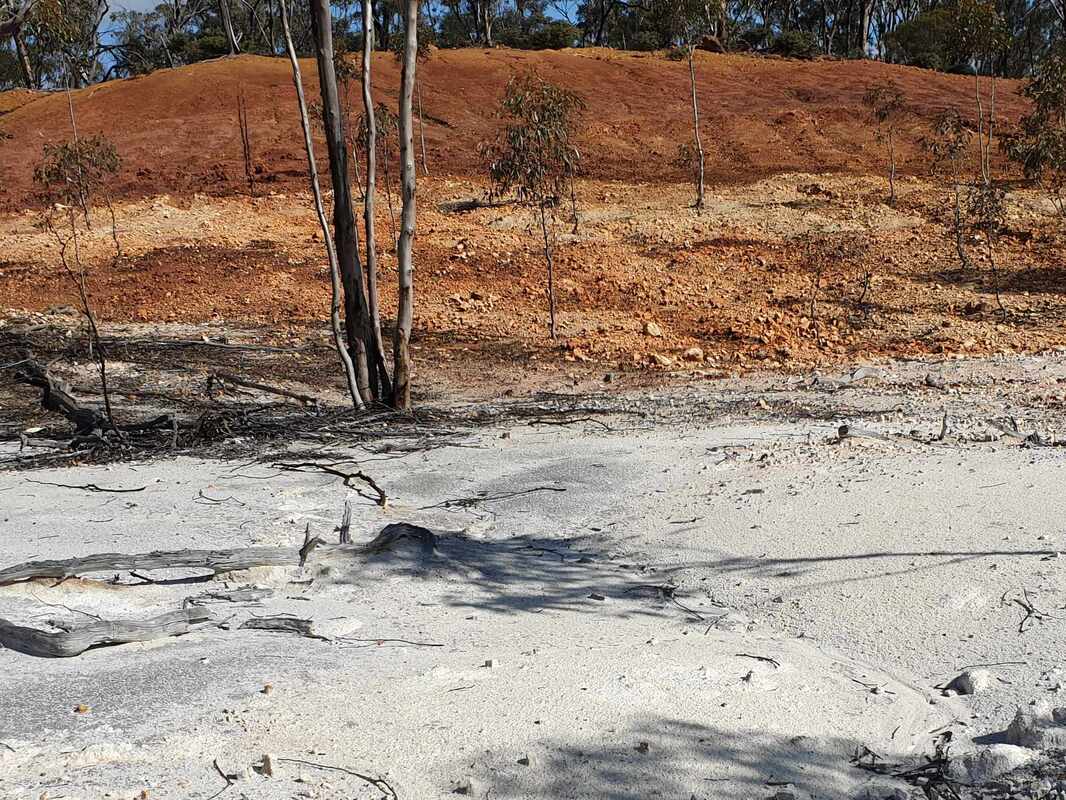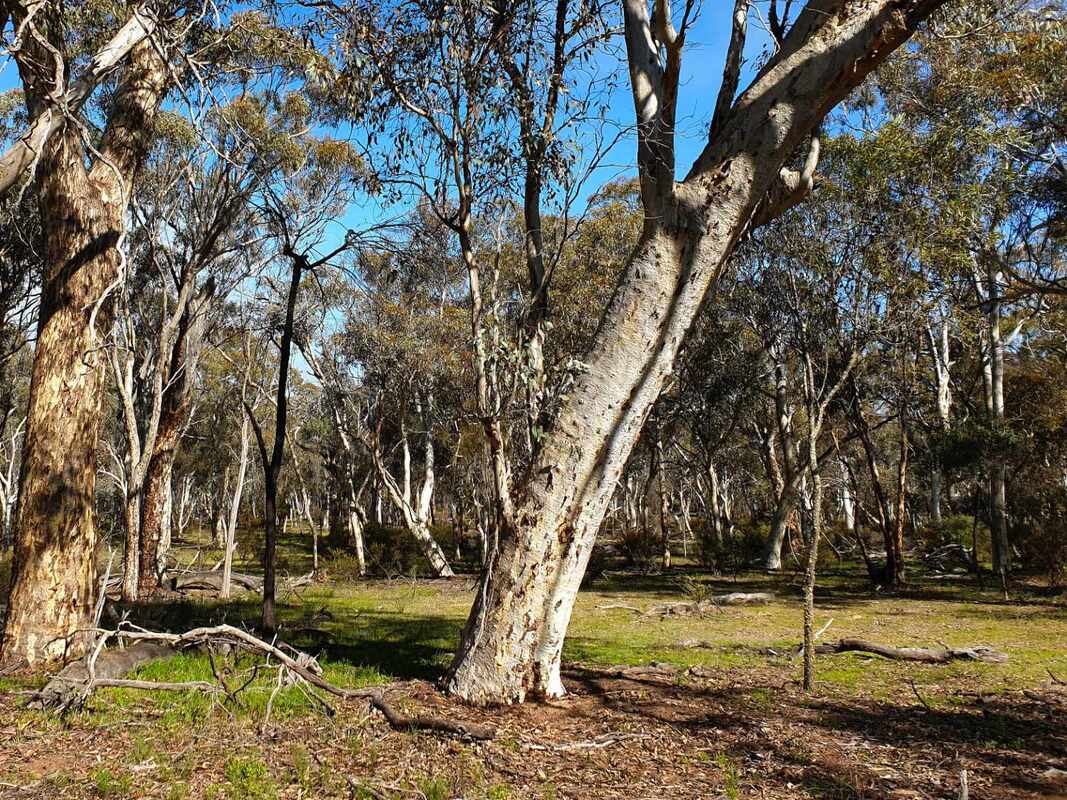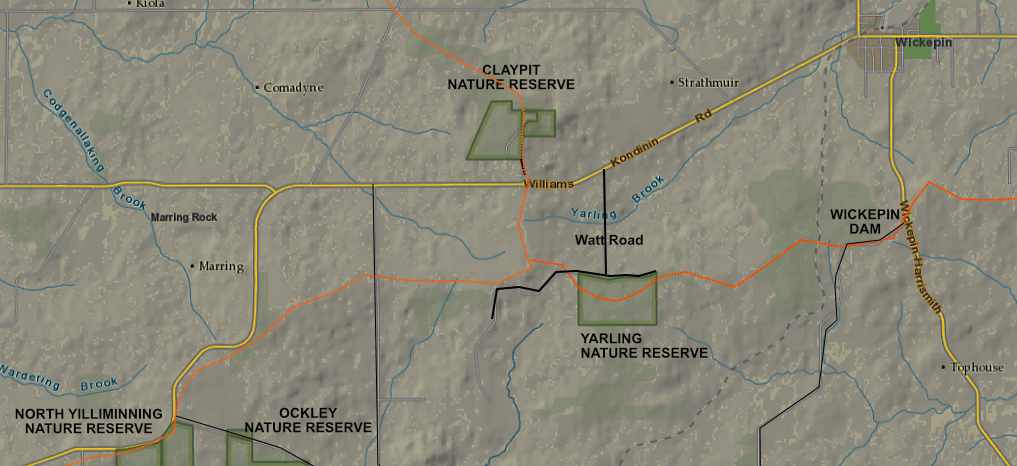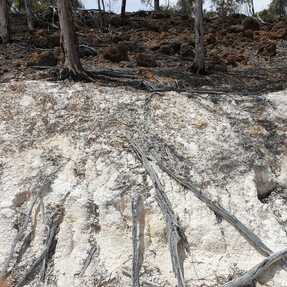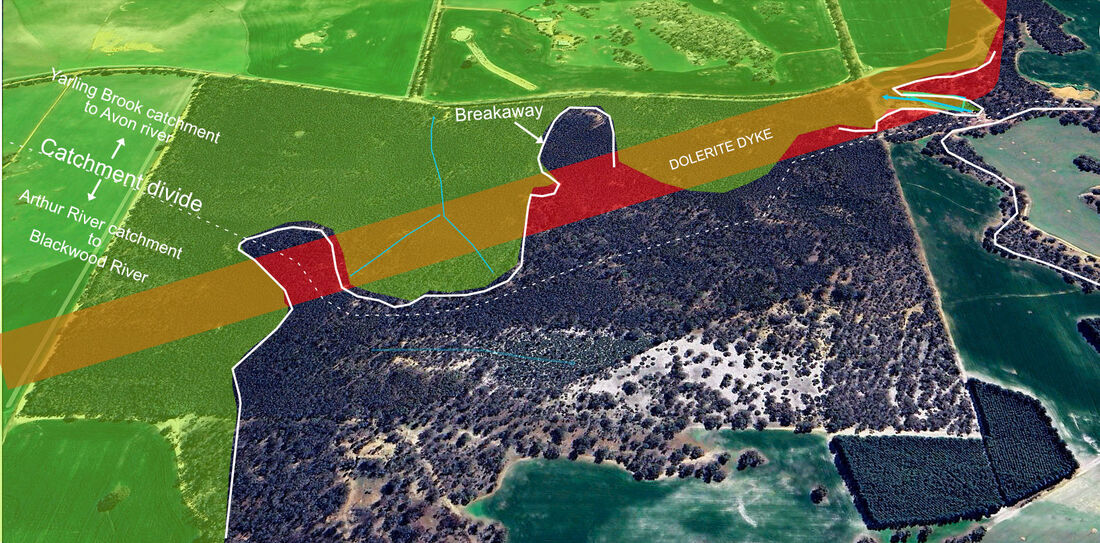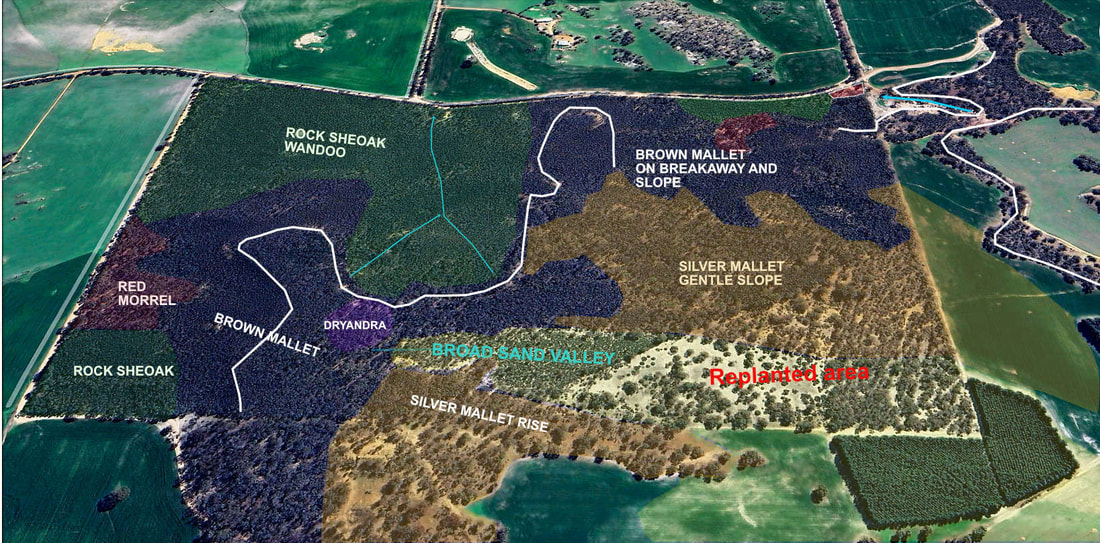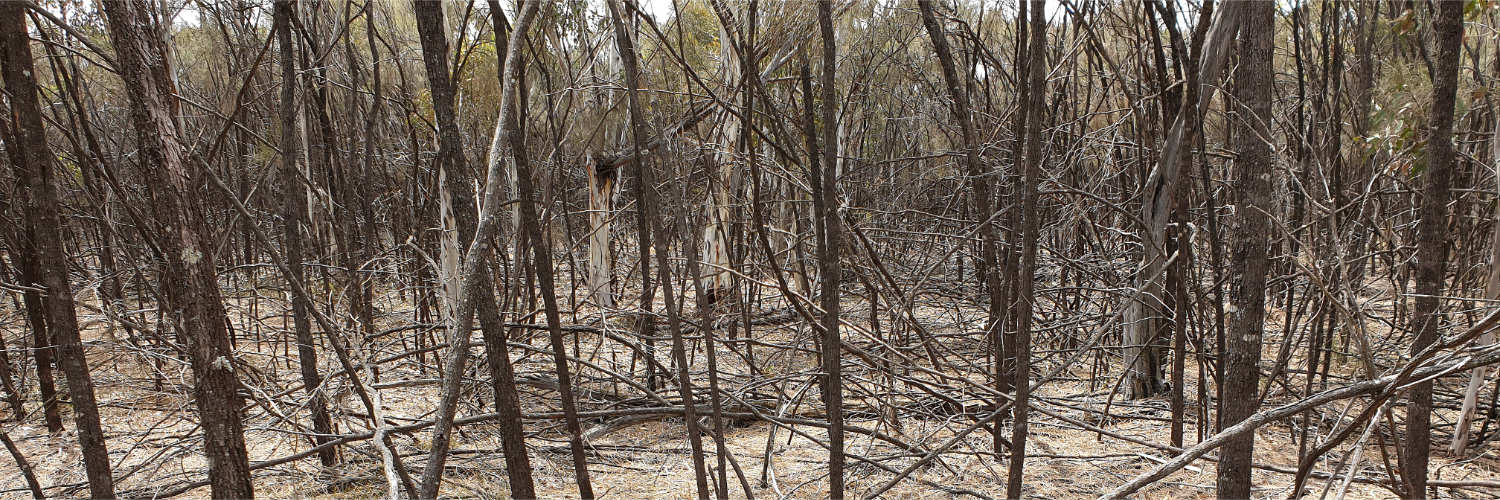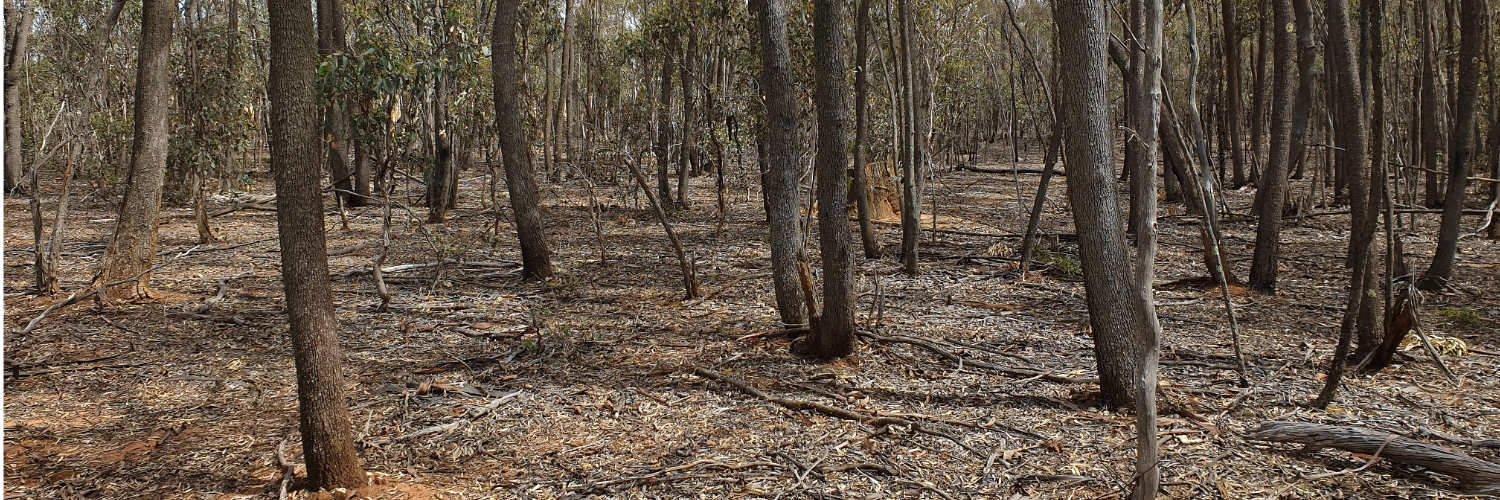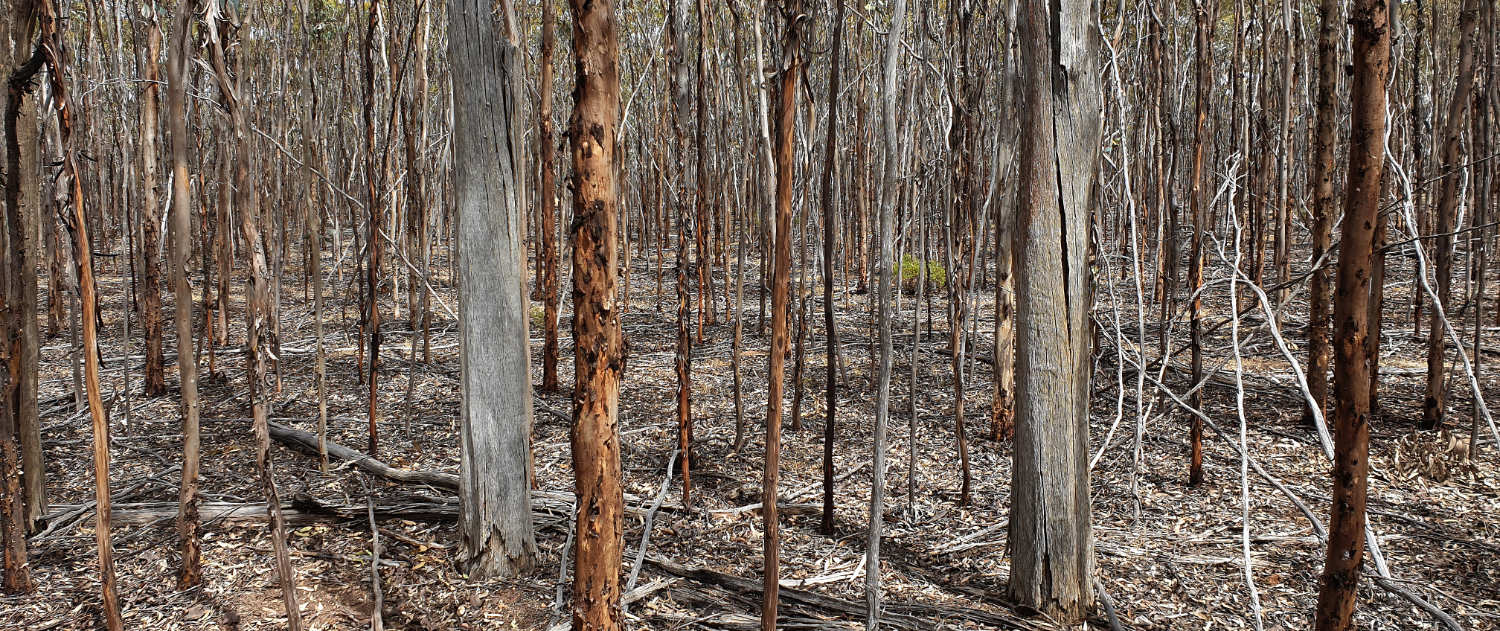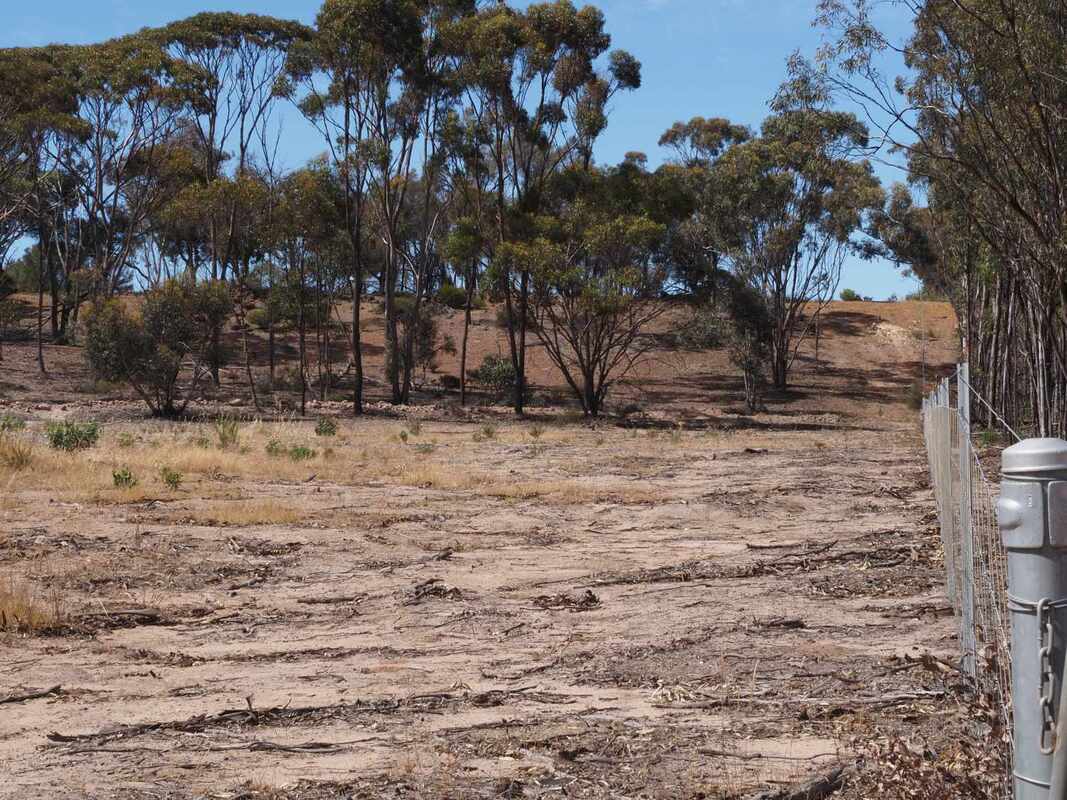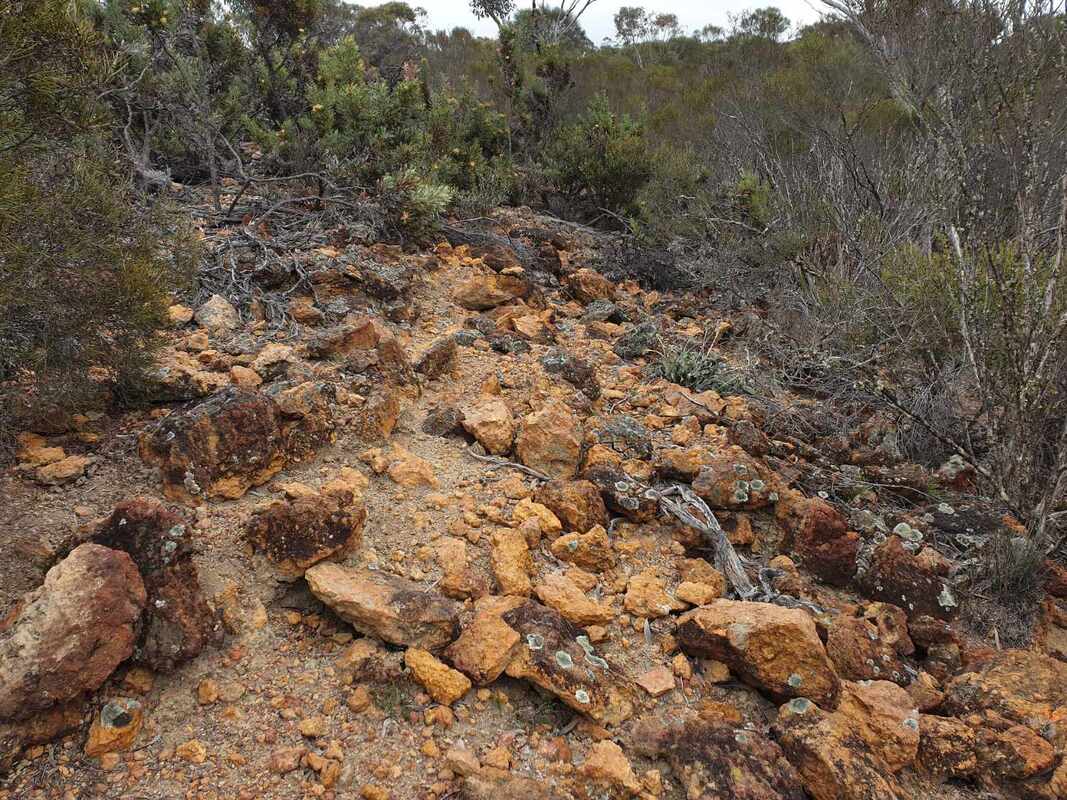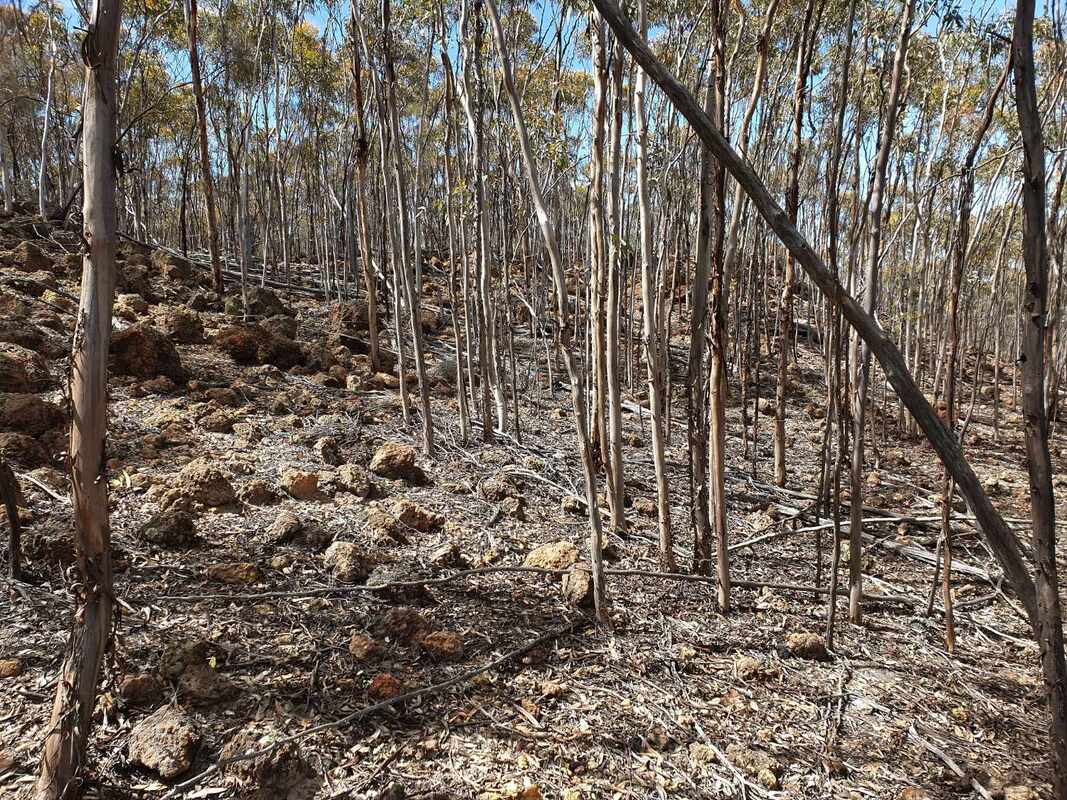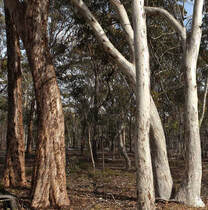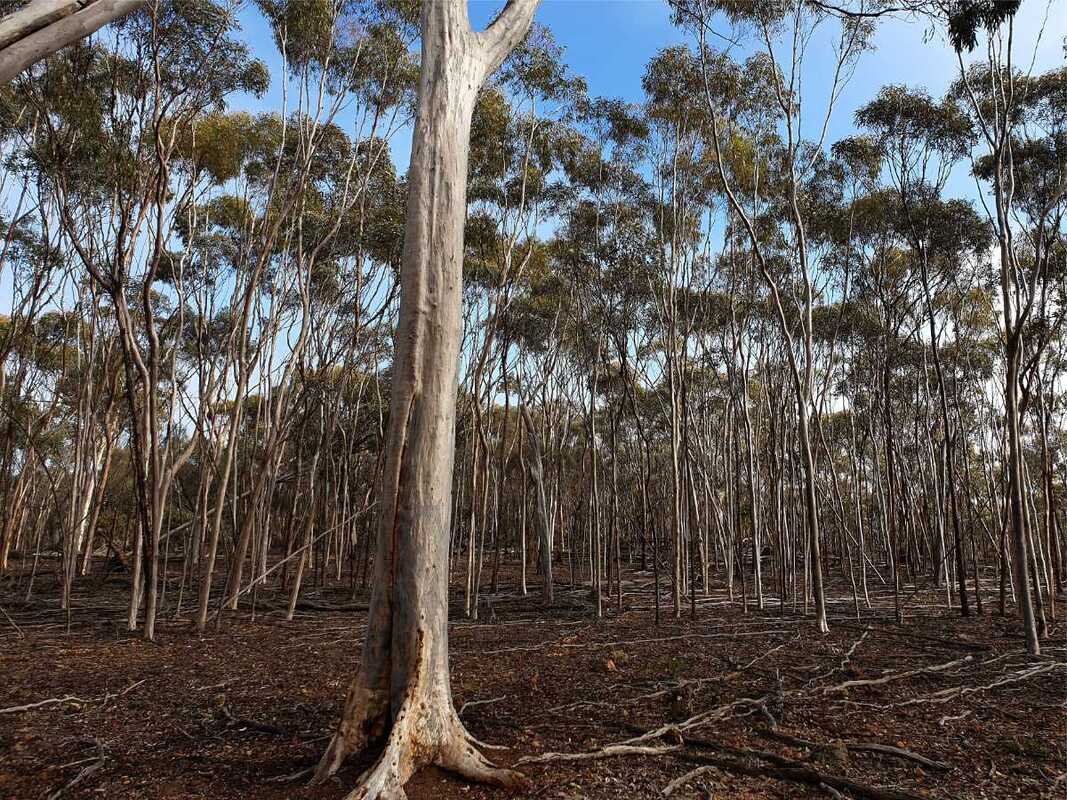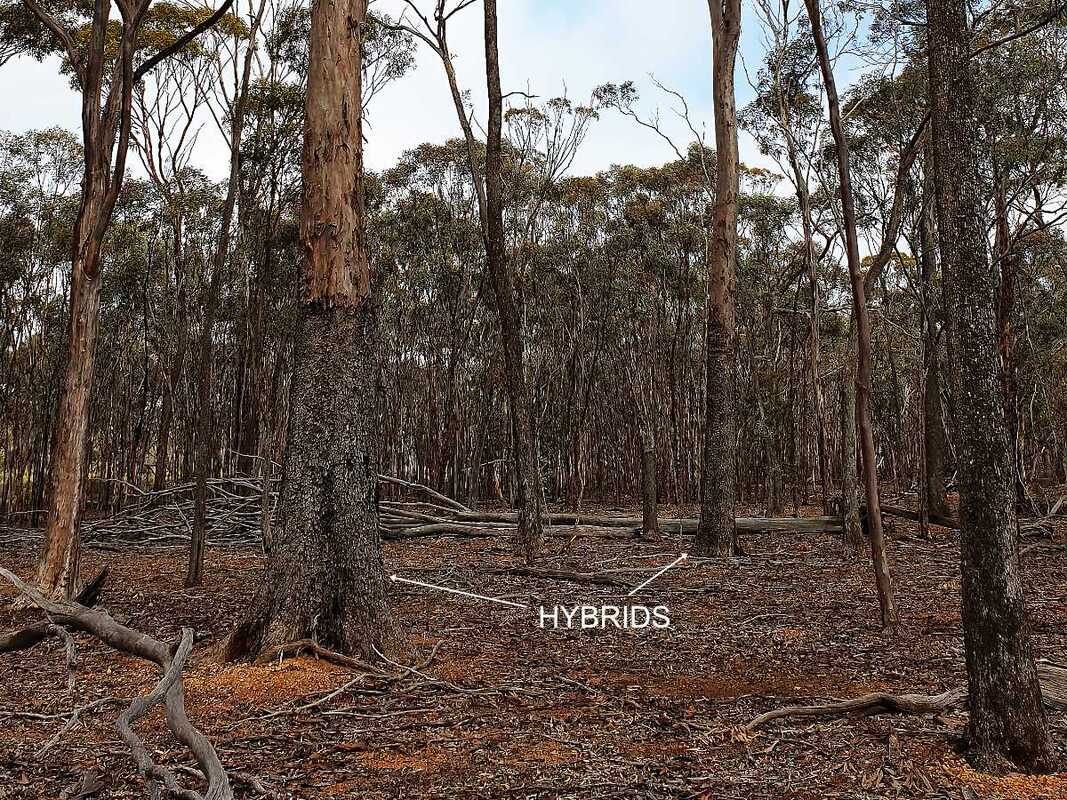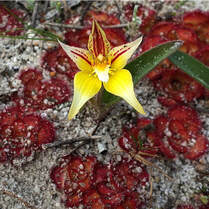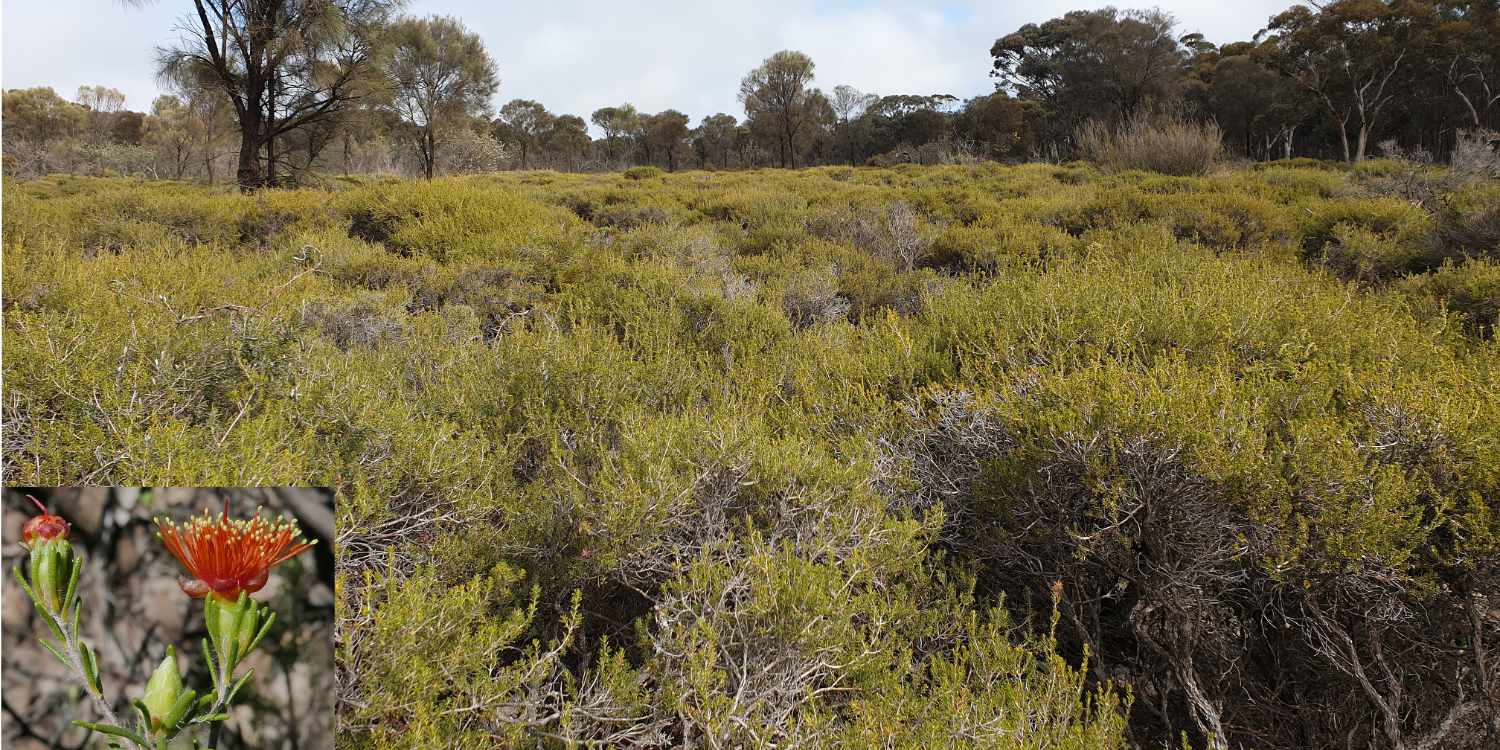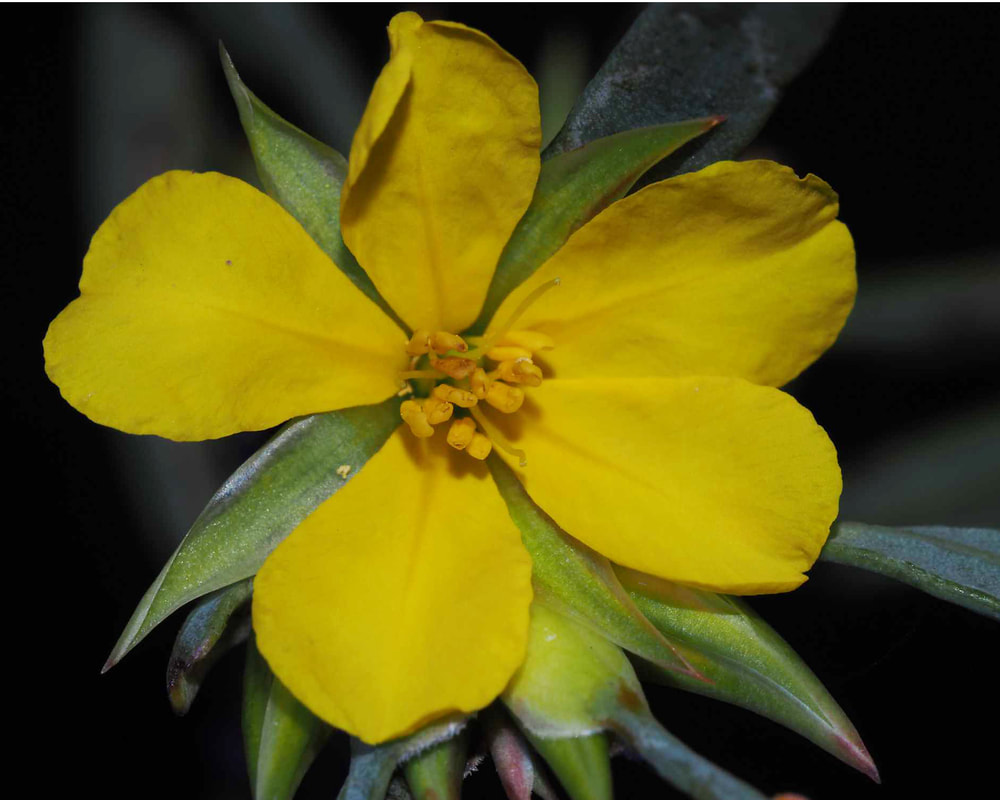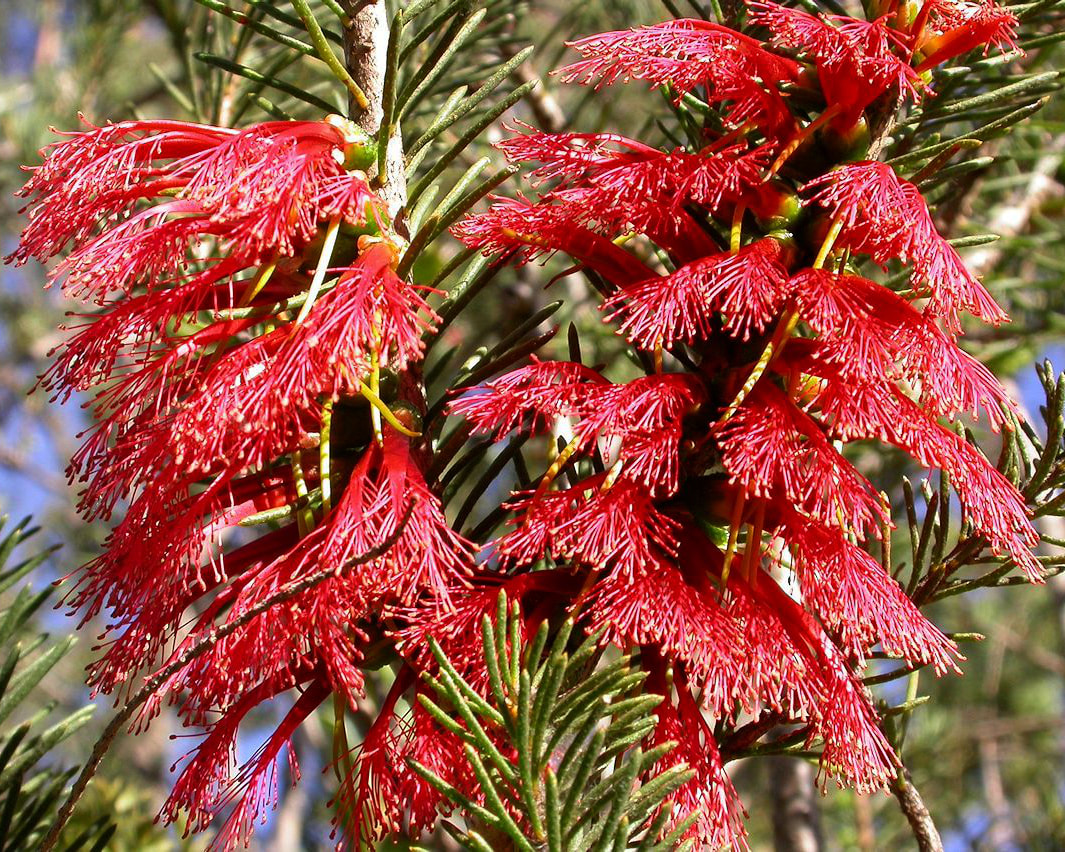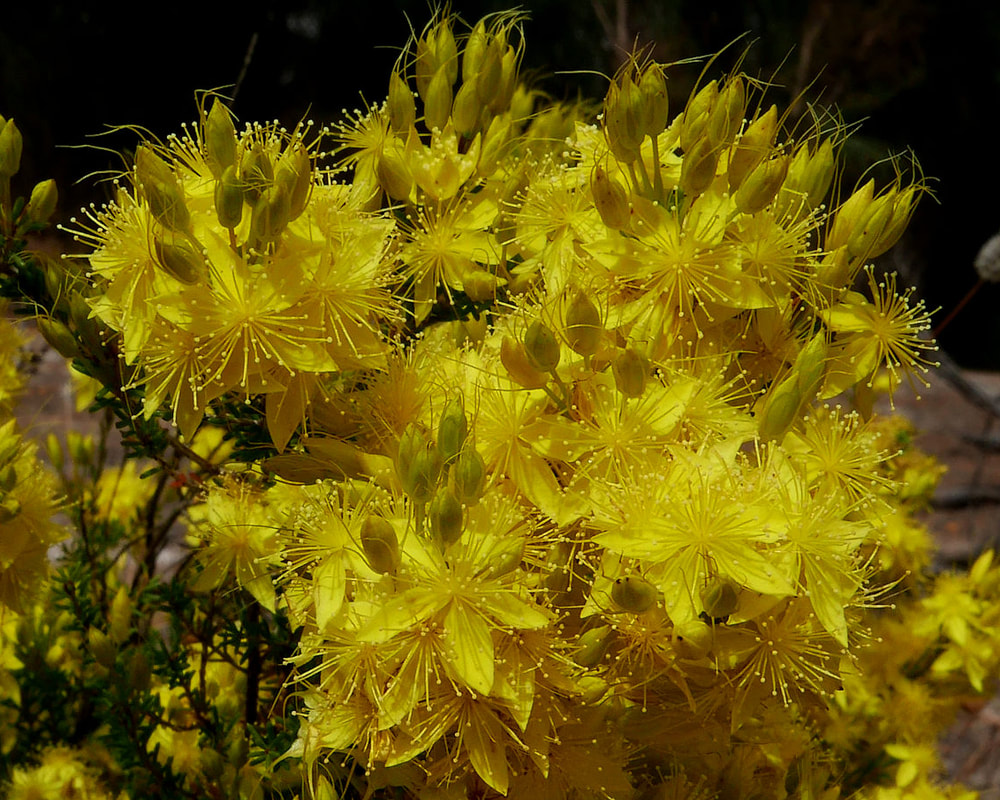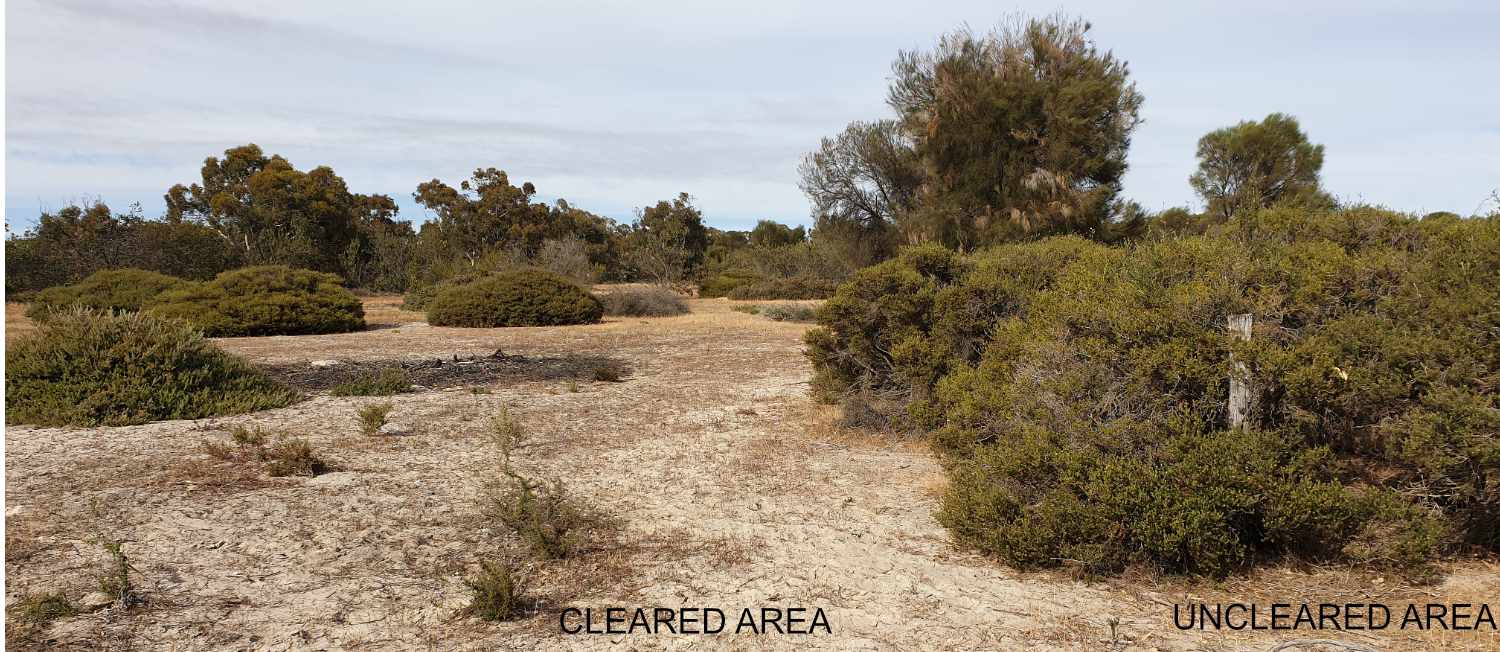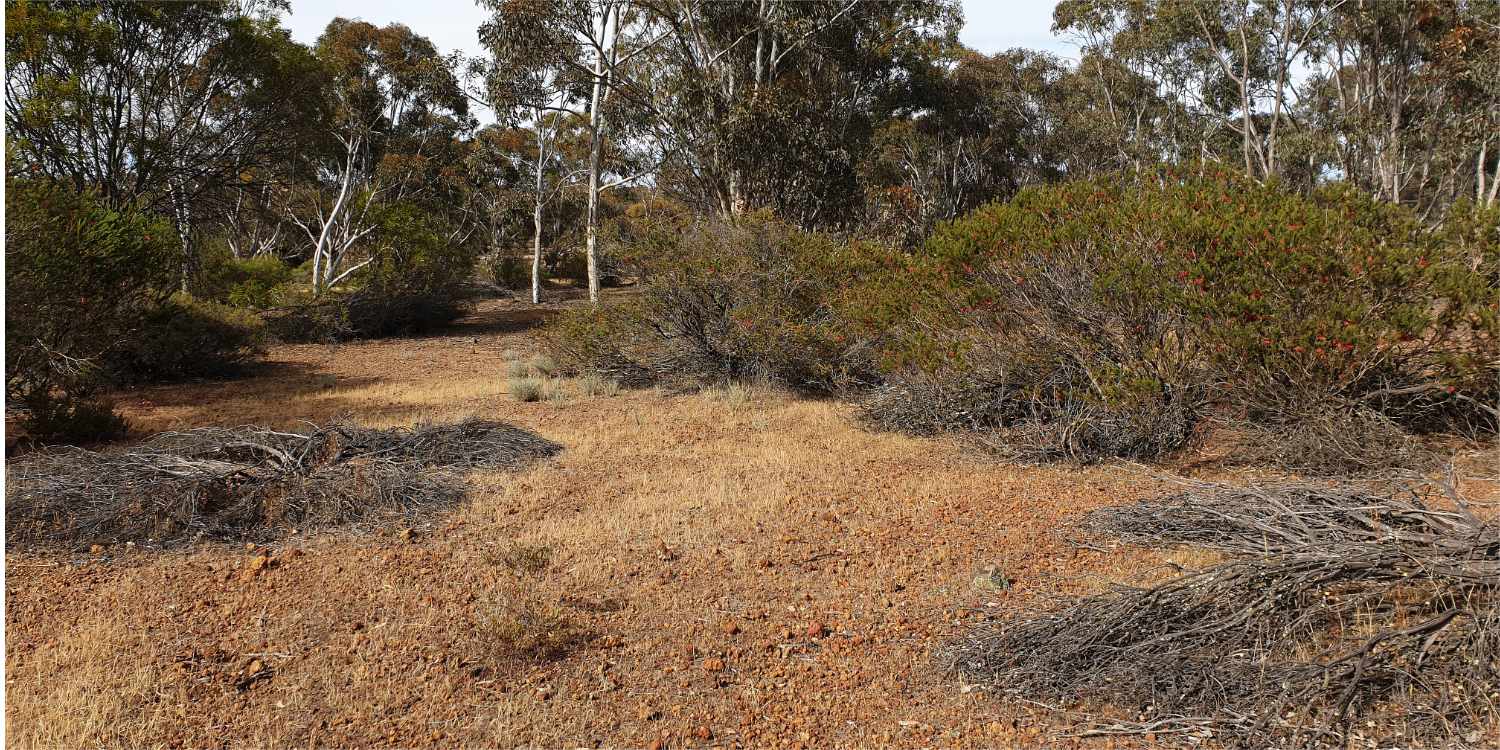- 33 kilometres east of Narrogin and 7 kilometres west of Wickepin
- A huge water tank of the Comprehensive Water Scheme, which is a lifeblood for local towns and farms
- Attractive woodland and spring wildflowers
- Excellent example of red and white ochres
- Good birdwatching spot
- No facilities
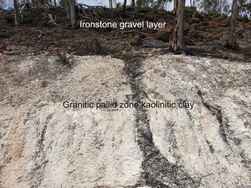 Gravel and pallid zones
Gravel and pallid zones The multi-million year old plain can be likened to a layer-cake, with a top layer of gravel, sand, or ironstone overlying a pale/mottled/red clay (pallid zone) over decomposing granite or dolerite bedrock. Pallid zone is basically kaolinite clay and quartz grains. A very pure deposit is being mined at Uelelling Hill. It is also the clay in ochres.
A sign adjacent to the Narrogin Kondinin Road is a trifle misleading in associating the reserve with the mafic Binneringie Dyke, which is some kilometres further south. Underlying rock here is mainly granite with a few intruding dolerite dykes. White granite kaolinite intruded by narrow red kaolinite seams from dolerite dykes can be seen on sides of cuttings as you drive to the water tank.
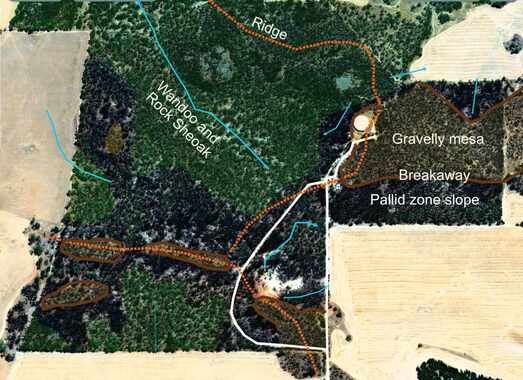
Hard setting loam and clay soils from the pallid/pink zone on breakaway slopes and upland surroundings downslope are mostly dominated by Brown Mallet woodland.
Open Wandoo woodland and more dense Rock Sheoak thickets in and around granite outcrops have more fertile soils formed from basement rock.
Much of the reserve is fairly easy walking country but there are no signposted walk trails and people with a poor sense of direction may get lost.
I suggest a visit to the following two areas.
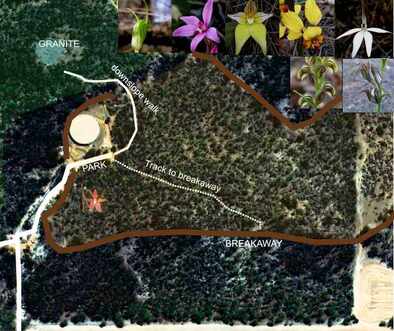 Water tank area
Water tank area Park next to the water tank.
The tank has a capacity of 9 million litres, which is pumped through a pipe from the Harris River Dam near Collie. Constructed in 1964, the tank is part of a water network that is very important to the district. before this, salinity of land and water sources,which began in the early 1900's caused severe fresh water shortages for people and livestock. Before scheme water, Wickepin residents were dependant on local wells and in desperate circumstances, water from the Wickepin Railway Dam.
Two informal trails provide access to diverse and wildflower-rich country.
A track winding downhill around the water tank to a granite outcrop features a range of spring wildflowers. Note impressive Tangled Grevillea clumps. The granite outcrop is on the northern boundary of the reserve. Please avoid treading on delicate lichens in and around the rock.
Surrounding rocky bushland is choked with dead vegetation and can be difficult to walk through.
 Ochre foot fun
Ochre foot fun 2. CLAYPIT
The bare area was an old mining lease to excavate clay for house bricks produced in Narrogin. The red clay overlies a 30 metre wide east-west dolerite dyke, and white from relatively low quartz granite, are also sources of ochre. I collected and made my own red, orange and white ochre from here!
An informal dead-end track on the western side is an easy walk to the west with a breakaway on the left (south) side. The area is pleasant open bushland with some shrub understorey.
